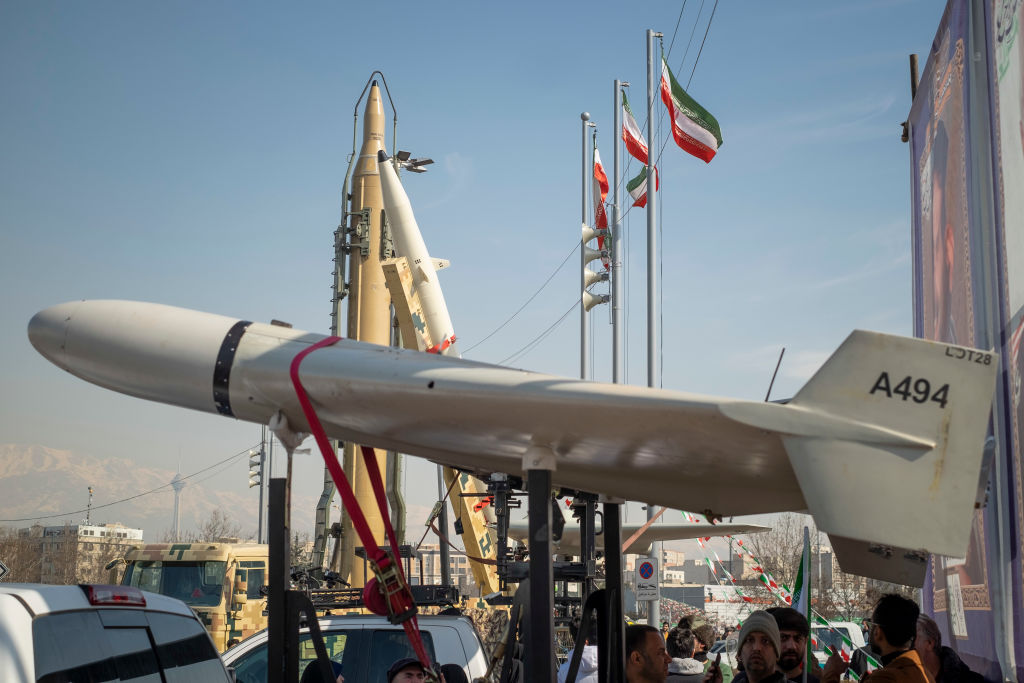
Nuclear deterrence, with its inherent risk of annihilation, cannot remain the bedrock of international security. Nuclear states, particularly great powers, can and should work on new conventional strategic options that can effectively deter aggression without posing an existential threat to humankind. Developing viable alternatives is necessary if we’re ever to move towards global nuclear disarmament.
One possibility is a disarming strike—the use of strategic non-nuclear capabilities calibrated to swiftly degrade an adversary’s ability to wage offensive war. Unlike a nuclear counterforce strike, which would involve a pre–emptive nuclear attack against an enemy’s nuclear arsenal, a disarming strike would rely on conventional and cyber capabilities to target critical military systems and infrastructure. It would hold at risk the key sinews of enemy military power—leadership, communications, logistics and major war–fighting systems—through a combination of massive cyberattacks, electromagnetic pulse weapons and other conventional capabilities. The goal would be to deter aggression by threatening to render a significant portion of the enemy’s military machine inoperable, rather than by threatening massive loss of life.
The increasing integration of artificial intelligence into defence capabilities can exponentially increase the accuracy, speed and power of non-nuclear disarming strikes, thereby strengthening their deterrence potential. AI-powered systems can process vast amounts of real-time data from a wide array of sensors and intelligence sources to identify, track and target an adversary’s critical military assets with unprecedented precision. They can optimise the timing and coordination of strikes to maximise their disruptive impact on the enemy while minimising collateral damage. For example, swarms of AI-guided drones and missiles could autonomously locate and neutralise an adversary’s key leadership nodes, communication hubs, supply lines and offensive forces in a matter of minutes. The prospect of having its military infrastructure paralysed before it could even launch an attack would give any aggressor serious pause.
Furthermore, AI-enhanced systems can ensure the robustness of second-strike capabilities by making them more resilient, dispersed and autonomous. AI could enable a dense, multi-layered web of early–warning sensors and interceptors to shoot down incoming missiles. Drone swarms and uncrewed vehicles could be pre-deployed in hidden locations, guided by AI to survive initial attacks and retaliate when ordered. With AI, states could credibly threaten precise, certain and devastating retaliation to aggression without necessarily revealing the full scope of their capabilities in advance.
If harnessed responsibly and effectively, AI has the potential to bolster strategic stability by ushering in a new era of ‘mutually assured debilitation’. By convincingly holding each side’s military infrastructure at risk of severe debilitation while being less destructive and more discriminating than nuclear bombs, AI-driven non-nuclear deterrence could prove to be a compelling alternative to the grim doctrine of nuclear MAD. The knowledge that an adversary possesses AI-empowered, always-ready counterstrike abilities that can’t be easily discovered and neutralised would significantly enhance deterrence, reducing the temptation for pre–emptive attacks or provocations. It may offer a viable path for nuclear powers to eventually move away from relying on doomsday weapon systems for their security, making the world a safer place.
This vision of AI-driven non-nuclear deterrence is not without its potential pitfalls. An increasing reliance on AI and complex cyber capabilities introduces new vulnerabilities, including susceptibility to hacking, algorithmic biases and unforeseen errors in autonomous decision-making processes. Such systems could potentially lower the threshold for conflict initiation, as some states could possibly engage in cyberwarfare and strategic strikes with less forethought than they would otherwise with nuclear weapons. The ambiguity in international law concerning cyberattacks and AI warfare complicates matters, potentially leading to miscalculations or unintended escalations. Additionally, there remains the moral quandary of increasingly automated warfare in which the human element is progressively distanced from the act of war, potentially eroding accountability.
Despite those concerns, it remains a moral and strategic imperative to explore alternatives to nuclear deterrence. The current war in Ukraine has included an unsettling number of nuclear threats, echoing the hair-trigger tensions of the past. More concerningly, recent war-gaming scenarios suggest that AI systems are likely to resort to nuclear escalation in a crisis. Even if nuclear deterrence has historically prevented great–power war, its infallibility for the future is not a given. A single misstep could destroy the entire human race. The world has come close to the brink at least twice, first during the 1962 Cuban missile crisis, then during NATO’s 1983 Able Archer exercise. For the sake of humanity, we must put the nuclear genie back into its bottle. That will require us to imagine credible alternative forms of deterrence.

